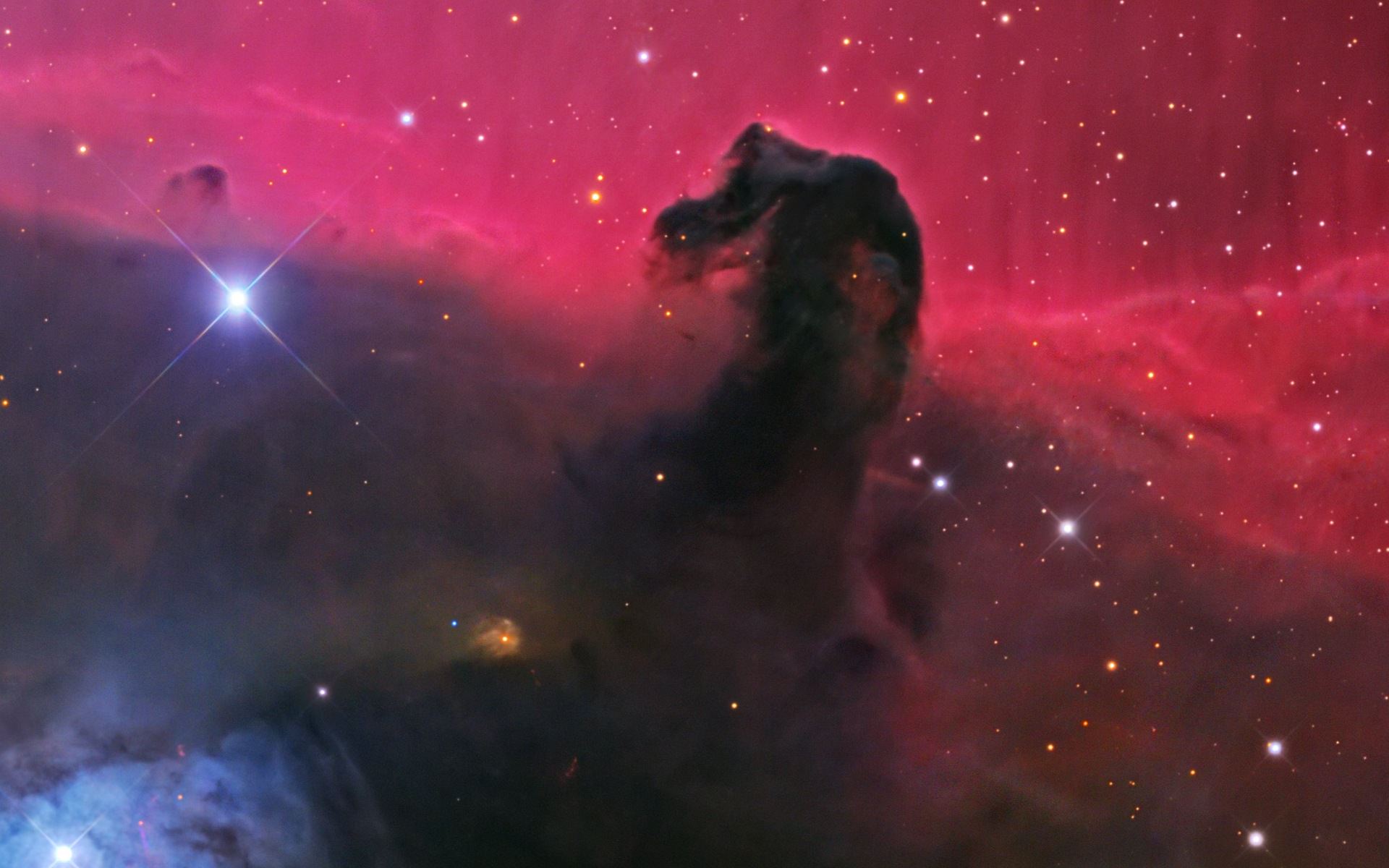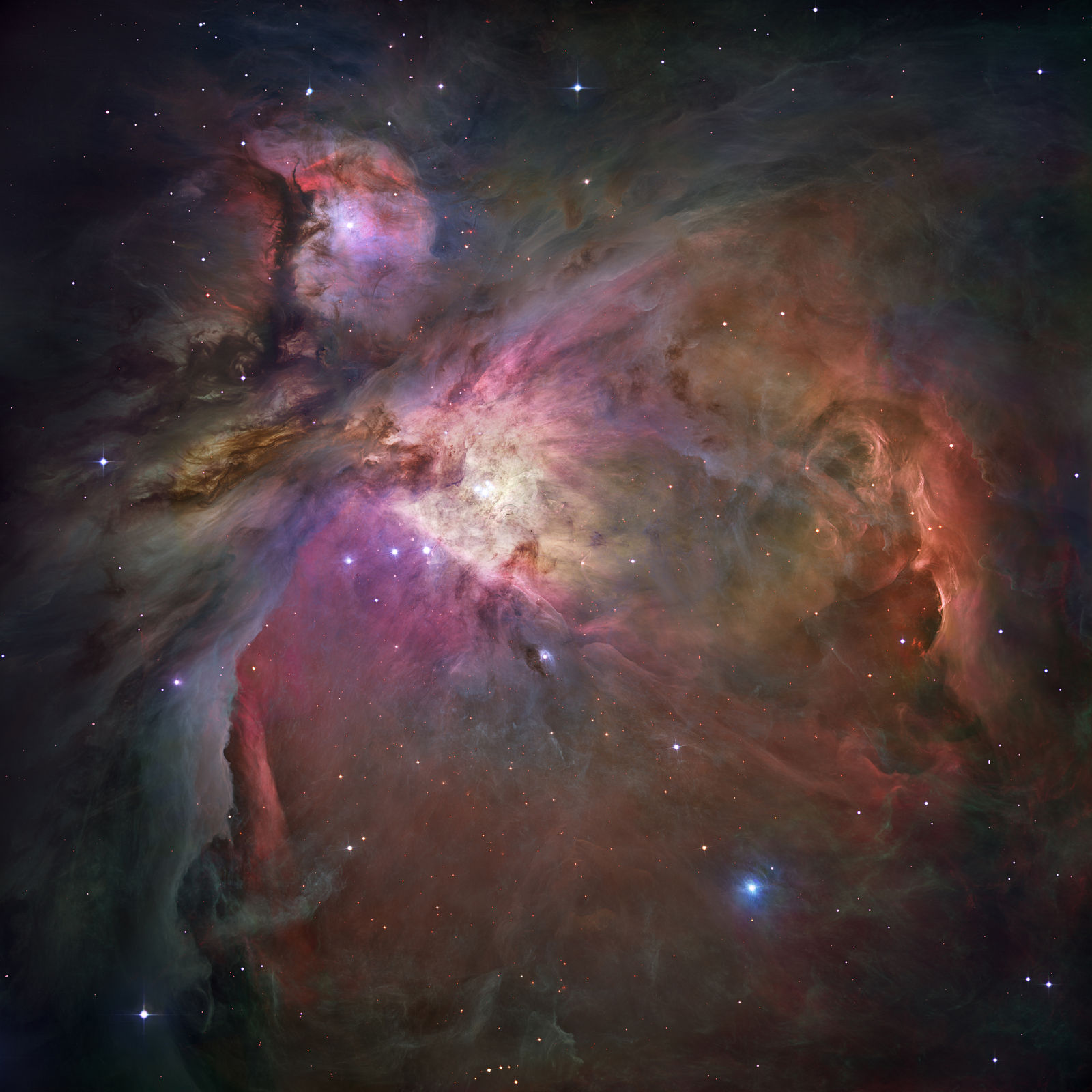
Orion's Arm Encyclopedia Galactica Black Hole
The Orion Nebula Cluster (ONC, M42) is a dense star cluster that is part of a complex star-forming region at a distance of about 400 pc (Jeffries 2007; Sandstrom et al. 2007; Menten et al. 2007). Due to its relative proximity, the ONC is one of the best observationally studied star clusters.. Having a black hole mass of ≈10.

The mighty Orion Nebula Orion Nebula, Andromeda Galaxy, Black Holes In Space, Telescope
Astronomy Tagged as Using sophisticated computer modeling programs, astrophysicists have shed light on the long-standing mystery of the binding force behind a cluster of unruly and rapidly swirling stars located in the famous Orion Nebula Cluster, also known as Messier 42 (M42).

Messier 42 The Orion Nebula Renfrewshire Astronomical Society
At the Heart of Orion Image Credit & Copyright: Christoph Kaltseis , CEDIC 2017 Explanation: Near the center of this sharp cosmic portrait, at the heart of the Orion Nebula, are four hot, massive stars known as the Trapezium .

M42 The Orion Nebula r/astrophotography
The Orion Nebula's distance of some 1500 light-years would make it the closest known black hole to planet Earth. Tomorrow's picture: the same color < | Archive | Index | Search | Calendar | RSS | Education | About APOD | Discuss | > NASA Web Privacy Policy and Important Notices

A black hole in the Orion Nebula Space EarthSky
It really is a dark hole in the nebula, and not a secret star forming region at all. V380 Orionis is the brightest star in the region of NGC 1999 - it's actually the brightest member of a.

Untitled Document Orion nebula, Nebula, Orion
The Orion Nebula, also known as Messier 42 (or M42 for short), is the nearest star-forming region to Earth, located approximately 1,350 light-years away and is about 2 million years old.

A black hole in the Orion Nebula Space EarthSky
Overview image of the Orion Nebula with the star cluster at its centre. The possible black hole would reside somewhere between the four bright stars which mark the centre of the star cluster.

M42 The Great Orion Nebula HDR Orion nebula, Nebula, Orion
Black Hole at the Center of Orion? / FromQuarkstoQuasars The Orion Nebula (M42), Image Credit: NASA/Hubble The Orion Molecular Cloud Complex has always been a source of intrigue for.

The Nearby and Orion Nebula Is Held Together by a Black Hole
The Orion Nebula is 1,500 light-years away, the nearest star-forming region to Earth. Astronomers used 520 Hubble images, taken in five colours, to make this picture. They also added ground-based photos to fill out the nebula. The ACS mosaic covers approximately the apparent angular size of the full moon.

Pin on Universe Galaxy and Stars
Zoom-in on the Orion Nebula. This video starts with a ground-based image of the night sky, taken by Akira Fujii, zooms on the star formation region of the Orion Nebula — observed by Martin Kornmesser — and ends with a detailed view of the nebula as seen by Hubble. Credit: ESA/Hubble, A. Fujii, M. Kornmesser.

M42 Orion Nebula in Narrowband SHO (Hubble Palette) astrophotography Orion nebula, Nebula
The Trapezium or Orion Trapezium Cluster, also known by its Bayer designation of Theta1 Orionis (θ 1 Orionis), is a tight open cluster of stars in the heart of the Orion Nebula, in the constellation of Orion. It was discovered by Galileo Galilei.

Orion Nebula (M42) (x/post from astrophotography) Astronomy
Distance 1,500 light-years Apparent Magnitude 4.0 constellation Orion object type Nebula NASA, ESA, M. Robberto (Space Telescope Science Institute/ESA) and the Hubble Space Telescope Orion Treasury Project Team Believed to be the cosmic fire of creation by the Maya of Mesoamerica, M42 blazes brightly in the constellation Orion.

M42 The Great Orion Nebula in 2020 Nebula, Orion nebula, Orion
The Orion Nebula is a picture book of star formation, allowing astronomers to study stars of all types and sizes in one location. More than 3,000 stars appear in this image alone. (Also available in Spanish.) Related Press Release: Hubble Panoramic View of Orion Nebula Reveals Thousands of Stars Keywords Emission Nebulas Star Forming Regions Stars

The Soul Calendar New Astronomy Photos Cosmic Rosebud, Winds of Change Black Hole, Orion Nebula
The Orion Nebula Cluster might be home to a black hole more than 100 times the mass of the Sun, according to a recent simulation. At 1,300 light-years away, that would make it the closest known black hole to Earth. Most of space is empty. Even when galaxies collide, individual stars are far more likely to exchange passing glances than meet head-on.

black hole Nebula, Orion nebula, Astrophotography
International study suggests a massive black hole exists in the Sword of Orion Overview image of the Orion Nebula with the star cluster at its centre. The possible black hole would reside somewhere between the four bright stars which mark the centre of the star cluster.

M42 The Orion Nebula (With images) Orion nebula, Nebula, Orion
A black hole in the Orion Nebula? An international team of astrophysicists says the famous Orion Nebula has a black hole at its heart, whose mass is some 200 times the mass of our sun. Read More.